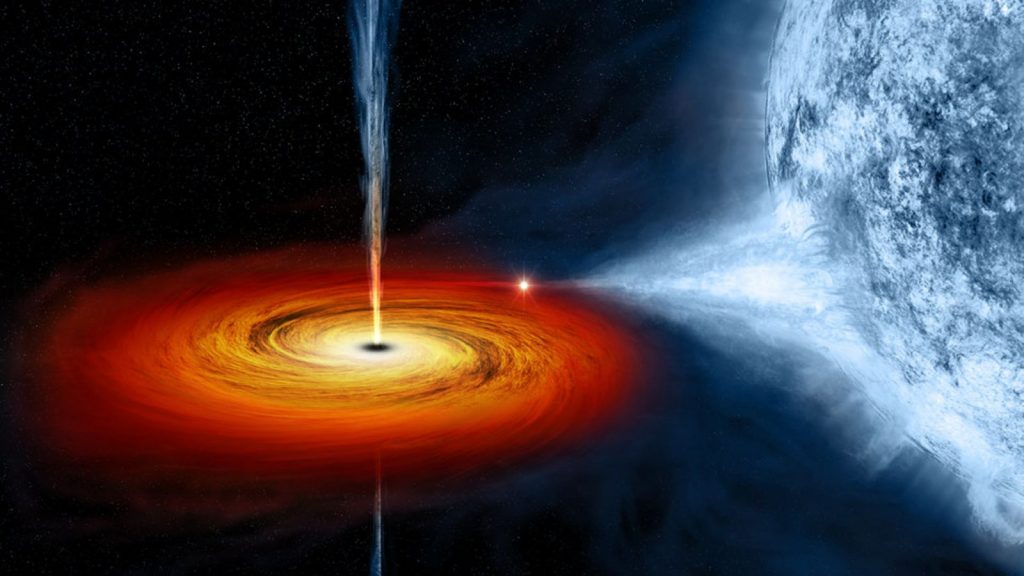Vampire black hole is a 'cosmic particle accelerator' that may solve a longstanding astronomy mystery
A distant microquasar, composed of a black hole feeding on a companion star, has jets that create shockwaves. These waves could accelerate the particles found in cosmic rays that bombard Earth.

Scientists may have found evidence that vampire black holes feeding on their victim stars — so-called microquasars — are the cosmic particle accelerators responsible for mysterious high-energy cosmic rays we see bombarding Earth.
These stellar mass black holes exist in binary systems with a supergiant star from which they greedily strip material. Some of that stellar matter then gets channeled toward the poles of the black hole, where it is subsequently blasted out in high-speed relativistic jets. Microquasars get their name because they are similar to quasars, which are powered by giant supermassive black holes feeding on surrounding material, but not quite as extreme.
First discovered in 1912, cosmic rays can hit our planet with staggering energies reaching 10²⁰ electronvolts (eV). That's way more energetic than the particles accelerated at the Large Hardon Collider, which is Earth's largest and most powerful particle accelerator.
To that end, supernovas and microquasars have been suggested as our universe's powerful cosmic particle accelerators. Scientists therefore believe these phenomena could be responsible for those high-energy cosmic rays. But evidence of microquasars accelerating particles to such high energies has been scarce — until now, that is.
The team made the connection between cosmic rays and microquasars when they used the High Energy Stereoscopic System (H.E.S.S.) to detect extremely high-energy gamma rays coming from the jets of the most powerful microquasar in the Milky Way. It's named SS 433.
These gamma rays are created when the jets of SS 433 slam into surrounding matter, creating a shock front that accelerates electrons to speeds that are great enough to account for the particles witnessed in high-energy cosmic rays.
"The acceleration mechanism would be similar to that in a supernova remnant, although the shocks in SS 433 jets are faster than supernova remnant shocks and can accelerate particles to higher energies," Valentí Bosch-Ramon, an associate professor at the University of Barcelona, wrote in a perspectives paper discussing the research published in Science. "The very energetic photons detected from the large-scale jets of SS 433 are an indirect indicator that these kinds of objects should not be neglected when seeking to explain the most energetic nuclei in Galactic cosmic rays."
The cosmic manatee
SS 433 was actually the first microquasar ever discovered; its existence was first revealed in 1975. It was named "SS 433" after being included in a 1977 catalog of celestial bodies, then rising to fame when science fiction author Arthur C. Clarke named it as one of his alternative "Seven Wonders of the World."
SS 433 sits at the heart of the supernova wreckage designated W50, located around 18,000 light-years from Earth and nicknamed the "manatee nebula." Decades of intense study have revealed SS 433 to consist of a black hole with a mass of around 10 to 15 times that of the sun, and a white supergiant star. The two are separated by about 15 million miles and orbit each other around once every 13 Earth days.
With no more than around a third of the distance between Mercury and the sun between the two occupants of SS 433, the black hole's immense gravity can strip the outer layers of its stellar companion. This stripped material forms an accretion disk around the black hole, while some of it is actually fed to the black hole. Other parts of the material get funneled to the black hole's poles via powerful magnetic fields. From there, the funneled material gets blasted out at around 26% of the speed of light.






















